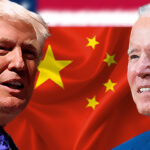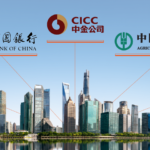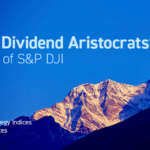
Consider a Dividend Growth ETF Strategy When Targeting Asian Markets
We believe investors looking into growth opportunities in Asia may wish to consider the KraneShares S&P Pan Asia Dividend Aristocrats ETF (KDIV) to access the region.
In a recent interview with VettaFi, Brendan Ahern, chief investment officer at KraneShares, explained that the S&P Dividend Aristocrats Index Series focuses on companies that have consistently increased dividend payments annually over a sustained period. The dividend growth strategy may outperform during rising rates, potentially provide an enhanced ability to weather market turbulence, an attractive source of increasing and sustainable income, and emphasize quality companies with strong balance sheets.
Ahern noted that Asia has outpaced the Americas and EMEA (Europe, the Middle East, and Africa) in terms of GDP growth in recent decades, which may offer investors the opportunity to ride along a fast-growing region. After years of growth, Asia’s equity markets are now the world’s second-largest after the Americas.
Ahern argued that investors should focus on dividend growers in Asia today. “During a time of acute monetary policy tightening throughout much of the Western world, major Asian central banks have remained relatively more accommodative, which we believe could lead to higher equity returns compared to the U.S.,” Ahern said. “Furthermore, lower inflation in Asia, especially in China, compared to Western countries may make companies’ dividend policies more sustainable.”
For example, the People’s Bank of China (PBOC), China’s central bank, lowered key lending rates in 2022, including the loan prime rate (LPR), which helps set mortgage rates, the medium-term lending facility (MLF), and the reserve requirement ratio (RRR) for banks. China’s inflation rate in October 2022 was 2.1% versus 7.7% in the U.S.1
Ahern explained that dividend growth refers to the consistent increase in dividend payments over consecutive years, focusing on repeated increases, not necessarily a high dividend. Breaking down a company’s sustainable growth rate uncovers drivers of dividend growth. The sustainable growth rate of a company is the rate at which earnings, i.e., potential dividends, can theoretically grow indefinitely if the firm’s debt-equity ratio is unchanged and no new equity is issued. By understanding that dividend growth companies have increased dividends at a sustainable rate, which may allow them to do so over multiple years, an investor can assume that the return on equity has historically been high for these companies. A high return on equity implies that these companies have exhibited a preferable combination of profit margins, asset turnover, and financial leverage.
Henry Greene, an investment strategist at KraneShares, added that strong dividend growth is generally a positive sign from company insiders of confidence in the future of the business, as well as a pro-shareholder orientation. He argued companies that grew or initiated dividends have historically exhibited superior performance and lower volatility.2 The contribution of dividend income to the total return of the S&P 500 has been significant and cannot be ignored.3 In addition, the lower drawdown may help prevent investors from making rash decisions regarding their portfolios to achieve investment goals.
Greene also pointed out that the S&P Pan Asia Dividend Aristocrats Index has historically had a higher aggregate dividend yield than its broad benchmark, the S&P Pan Asia BMI Index, and higher dividend growth across its constituents. Furthermore, the S&P Pan Asia Dividend Aristocrats Index offers a 2% higher dividend yield and over 30% lower P/E than the S&P Pan Asia BMI Index.4
“We believe its strong performance is a testament to the fact that dividend-growing companies are firms with enduring investment value, particularly for investors with long-term horizons,” Greene said.
We recently launched the KraneShares S&P Pan Asia Dividend Aristocrats ETF (KDIV), which provides access to the S&P Dividend Aristocrats methodology applied to the Pan Asia region, one of the fastest-growing areas in the world. The S&P Pan Asia Dividend Aristocrats Index includes exposure to China, Japan, Australia, and other Asian companies that have paid and increased dividends over a sustained period.
“We believe dividend growth is an attractive investment theme that should be considered when constructing a portfolio,” Greene said. “Investors who seek opportunities to gain or replace Asia equity exposure by focusing on high-quality companies dedicated to returning money to their shareholders should consider incorporating dividend growth strategies into their portfolios.”
Citations
- Data from Trading Economics as of 12/6/2022.
- U.S. stocks that raised their dividend payouts over a ten-year period or more averaged 13.9% annual returns from 1987 to 2014, 0.38% higher than dividend payers that were not increasing dividends. Source: "Harnessing the Long-Term Potential of Dividend Growth," FTSE Russell. Nov. 2018. When observing S&P 500 dividend growers during the market declines in 2007-2009, 2018, and 2020, we found the max. drawdown to be 21.5%, 6.1%, and 35.4%, respectively, comparing favorably to the S&P 500 Total Return max. drawdown of 35.0%, 10.2%, and 35.5% in those periods, respectively, according to data from Bloomberg as of 12/31/2020.
- From 1990 to 2020, dividend payments accounted for approximately 50% of returns in the S&P 500, according to data from Bloomberg as of 12/31/2020.
- “The Case for Dividend Aristocrats in Pan Asia,” S&P Dow Jones Indices, Aug 29, 2022.
Index Definitions
S&P Pan Asia Dividend Aristocrats - measures the performance of constituents within the S&P Pan Asia Broad Market Index (BMI) that have followed a policy of consistently increasing dividends every year for at least seven years.
S&P Pan Asia BMI - a comprehensive benchmark including securities from developed and emerging Asia.



















